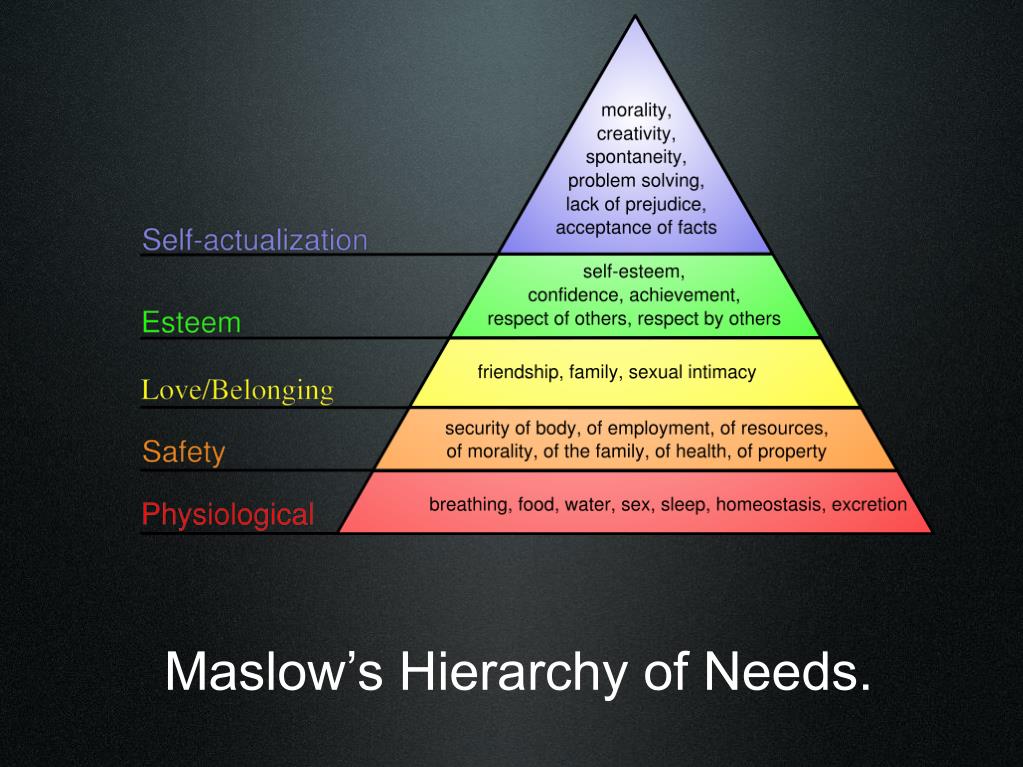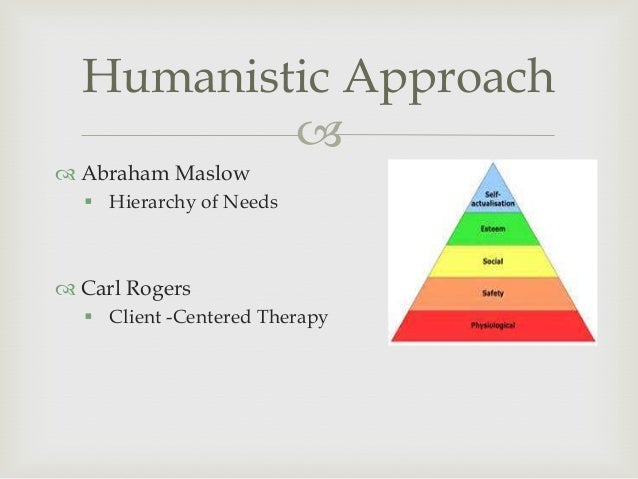

The highest needs he termed self–actualizing needs and described people who are self–aware, concerned with personal growth, less concerned with the opinions of others or the crowd, and keenly interested in fulfilling their potential. Social needs (love, affection) are associated with interaction and companionship, while self-esteem needs dealt with the quality of those relationships. Even within the level, there was a hierarchy lack of oxygen is more basic than thirst. He proposed the hierarchy of needs model in 1943 in a paper entitled A Theory of Human Motivation, which assumed people had a hierarchy of needs, and that it was necessary for the basic needs to be fulfilled first before advancing on to more sophisticated needs.Īt the lowest level were physiological needs such as water, food, air, sleep had to be met before more higher–order needs. Maslow proposed that basic needs must be met first before higher–level needs could be realized. Maslow, however, was interested in the optimal, conscious capabilities of people.

Earlier researchers such as Freud had focused on illness, while Pavlov looked for actions dictated by other than conscious choice. During this time, he said he was inspired by colleagues including the anthropologist Ruth Benedict and Gestalt psychologist Max Wertheimer, whom he was to regard as models of "self-actualizing" people operating at the highest level of human consciousness. In 1937, he began to teach at Brooklyn College, City University of New York, and produced some of his best-known work. An experiment indicated that a baby monkey would prefer affection over food.

He began studying monkeys, working with Harry Harlow. Abraham Maslow (1908-1970) was an American psychologist, often credited with starting the "third force" of humanistic psychology, in contrast with Pavlov's behaviorism and Sigmund Freud's psychoanalysis.


 0 kommentar(er)
0 kommentar(er)
